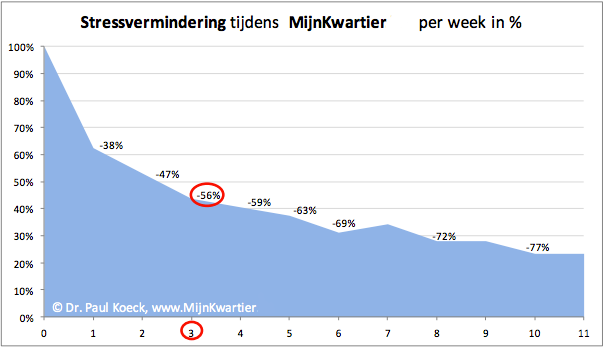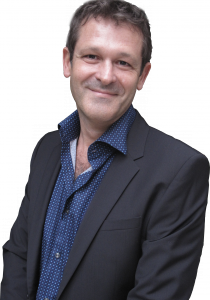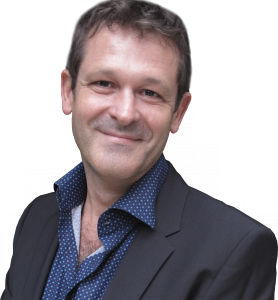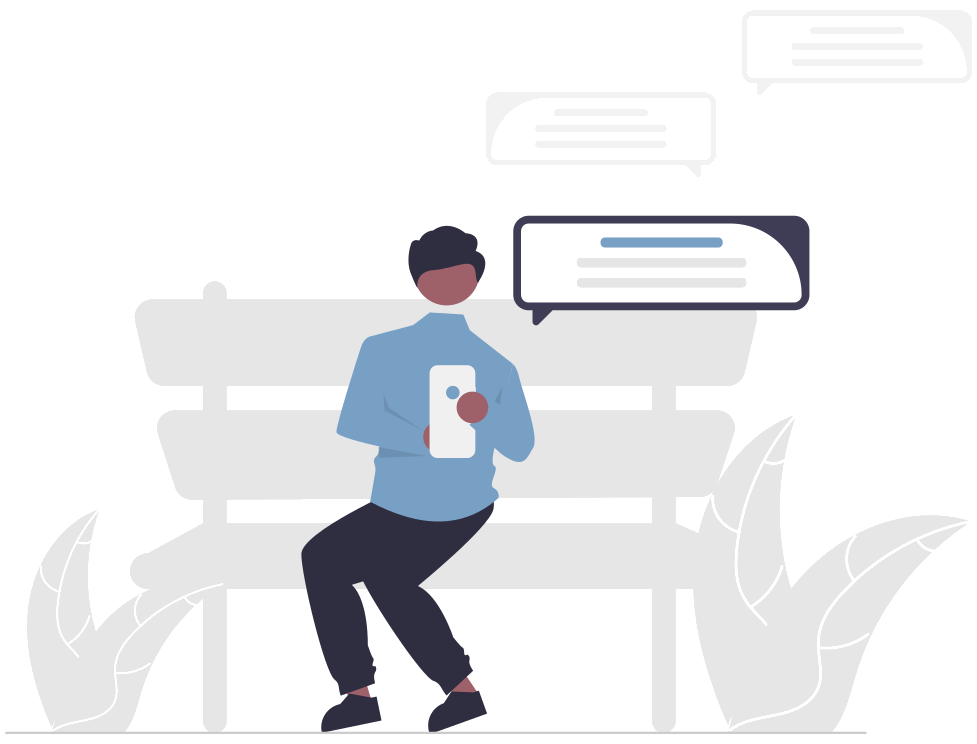Stress scores drop to -64% , life satisfaction increases permanently by +40%
How sustainable are the results?
The average participant in the daily online self-help program '15Minutes4Me.com', for psychological complaints such as stress, anxiety, depression and burnout , achieves normal, healthy stress scores[1] at the end of the self-help program and he/she maintains them over successive months and years. We see a sustained stress reduction of 64%. This is the conclusion of a follow-up study study by Dr. Paul Koeck on 1335 participants. This same study also shows a lasting increase in life satisfaction[2] of 40%.
How soon can you expect results?
A previous study on 1,056 participants, presented in 2014 at the 7° Flemish Mental Health Congress, already showed that the average participant is stress-free in 21 days of online self-help thanks to a stress reduction of more than 50% compared to his starting scores. As a result, he achieved "normal" stress-free scores, in the green zone of his stress graph. During the same 21-day period, the participant was already 40% more satisfied with himself and his life.
New follow-up study
This study new was presented on Tuesday, Nov. 20, 2016, at the biennial 8° Flemish Mental Health Congress organized by the Flemish Association for Psychiatry. In this follow-up study, Dr. Paul Koeck examined the stress scores of n=1335 participants of the daily online self-help program '15Minutes4Me.com' for mental health symptoms such as stress, anxiety, depression and burnout who participated in the follow-up study in the months and years after finishing the program. This is 34% of all participants who were invited by email to complete again the stress test and life satisfaction scale from during the program. These results are published today - Thursday, Sept. 22 - by the physician specialist journal "The Specialist"(http://www.lespecialiste.be/fr ).
How does "15Minutes4Me.com" work?
After taking the free stress test - which has meanwhile already been completed by 1.2 million people worldwide - the participant receives a video explaining the self-help program, after which he freely chooses whether to sign up for one month or not. After registering, the participant receives a login and password and is invited daily by e-mail to engage in 15 minutes of self-help.
Daily, he or she answers solution-oriented questions that help him or her find new solutions to existing problems. These solutions are refined and practiced daily until new habits are learned that help solve, prevent or learn to accept the existing problem if it is an unsolvable impairment.
Weekly, the participant is retested to measure his evolution and prepare a report in graphs for his doctor. He receives this report with evolution graphs by e-mail so that he can print it out or forward it to his doctor.
Depending on his specific needs, the participant follows specific sub-modules of the program with targeted psycho-educational videos that help him/her gain insight into his/her problems or discover and practice new solutions until they are new habits. Once the new habits are installed, relapse prevention is done for those who need it.
Afterwards, the participant can either solve problems other than his/her "registration complaint" (e.g. depression, anxiety, hyperventilation, stress, fatigue, burnout, tinnitus, ....) or develop new skills (communication, assertiveness, learning to prioritize, time management, respectful boundaries, ...) and also practice these into a new habit or quietly stop the program and enjoy his/her new life. It is possible to rejoin the self-help program months or even years later in order to tackle a few more things, just as you can go back to your doctor or therapist to discuss something.
The participant goes through the following stages:
- Solution-focused solutions for his/her problem
- Practicing these into habits
- Relapse prevention Preparation (if desired for chronic problems)
- (If desired resolve other problems and practice them into new desired habits).
Furthermore, the participant can invite one or more support figures (partners, family or friends) by email. These support figures receive online video tips with guidance to learn new support skills. We encourage a new dialogue between the participant and his social network by, among other things, asking solution-oriented questions about the participant to the support figure. After the participant has read what, for example, his partner writes about him, a "therapeutic inter-family dialogue" is created, which is almost imperceptibly triggered by the program.
You can read more about how it works at https://www.15Minutes4Me.com/hoe-verloopt-het-zelfhulpprogramma/
Chart explanation
The difference between the 2014 study and this 2016 study, is that the 2014 study[1] describes the participant's progression during the program, while this new 2016 study examines how the participant evolves afterwards. The "final score" in the attached graph shows the last score before the participant stops the self-help program. This is important because -just as in classical talk therapy- the participant chooses how long he wishes to follow the daily (self-help) therapy, for himself. The 2016 study shows that the results presented in 2014 are sustainable and that the fear of relapse across the board is unfounded on average, which does not alter the fact that individual participants should each be followed up individually by their physician to evaluate whether the counseling and relapse prevention provided by 15Minutes4Me.com is sufficient for this particular participant.
Your participant can take this stress test free of charge at www.15Minutes4Me.com or in French www.Mes15Minutes.com. This stress test has already been completed by more than 1.2 million people worldwide.

Practical Info:
- Contact person:
- Paul Koeck, 03/2379898, zelfhulp@15Minutes4Me.com, www.15Minutes4Me.com
- Paul Koeck, 03/2379898, Auto-Aide@Mes15Minutes.com, www.Mes15Minutes.com
- Press photos: below at https://www.15Minutes4Me.com/in-de-media/
- Language versions:
Core charts study 2016:


 The limit of >50% stress drop within 3 weeks for the average participant coincides with reaching normal scores (green zone) on the stress test of www.15Minutes4Me.com
The limit of >50% stress drop within 3 weeks for the average participant coincides with reaching normal scores (green zone) on the stress test of www.15Minutes4Me.com

Previous press release: Burnout? 50% less stress, anxiety or depression and get rid of your symptoms through 3-week online self-help program "15Minutes4Me.com". https://www.15Minutes4Me.com/pers/burn-out-stress-angst-depressie-verlost-minder-dan-drie-weken-zelfhulpprogramma-mijnkwartier/
Press photos
Download all press photos via this handy zip file.
[2] Life satisfaction is measured using a simple visual digital self-score scale from 0 to 10 with the question, "Where do you stand today on your satisfaction scale from 0 to 10?"
- if 0 means "the worst it has been in the last 6 months"
- if 10 means "if my life continues like this, I will be satisfied"




















